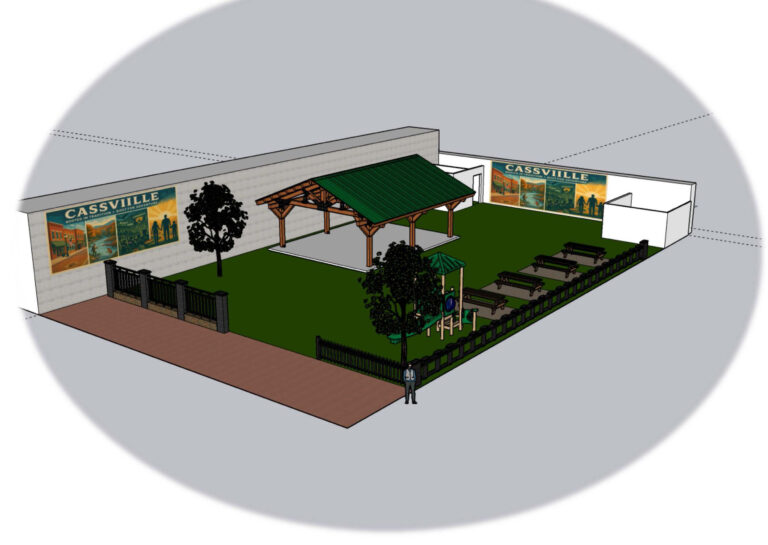Census shows major changes in Barry County
The latest information released by the U.S. Census shows Barry County followed some statewide trends that moved strikingly away from patterns seen in the 2010 census.
The overall population count placed the county at 34,534 people, down 1,063. This reverses the upward trend that held steady since the 1980s, particularly the growth of 6,463 people (23.5 percent) added between 1990 and 2000.
In 2010, southwest Missouri had the largest regional growth in the state. The 2020 census moved that to the Kansas City metropolitan area. The state population nonetheless rose by 7.4 percent, and continued to grow in southwest Missouri in the multi-county metropolitan regional areas of Springfield (+.8 percent) and Joplin (mostly after the 2011 tornado). According the the analysis by Dr. Mark White with the University of Missouri Extension Service, 78 of Missouri’s 114 counties and one independent city lost population in the past decade.
The U.S. Census Bureau said statistical breakdowns provided in the past will be released in May 2023.
In addition, the Census Bureau has revised some 2010 population numbers, though most municipalities appear unchanged. Revised numbers showed 156 more people in Barry County to 35,753, thus increasing the population drop in the latest count to 3.5 percent from 3 percent. That suggests the latest tallies may be revised later as well.
The latest numbers included estimates from the American Community Survey. The only solid numbers offered by the census were total number of households and the number of Hispanics in the county.
In Barry County:
• The number of households decreased by 533 to 16,990.
• The Hispanic population, by the official count, rose by 588 people to 3,333.
The following comparisons arose in the American Community Survey estimates:
• Median household income rose from $36,143 in 2010 to $45,811 in 2020.
• Bachelor’s degree or higher in education: up from 12.4 percent to 15 percent.
• Employment rate: down from 60.4 percent to 52.3 percent.
• Without healthcare coverage: 12.6 percent (no previous comparison).
• Number of employers, establishments: 721 (no previous comparison).
Community profiles inside Barry County offered the following details:
Cassville
• While the number of people in Cassville dropped by 76 to 3,190, total number of households rose by 2 by 1,277. Total number of housing units rose by 114 to 1,389. According to the count used for redistricting in 2010, the current housing unit count represents a decrease of 13 in a decade.
• The Hispanic/Latino population grew significantly in the past decade, from 50 to 209.
• Cassville is now estimated to have 45.8 percent of its population employed, down from 61.1 percent in 2010.
• Unavailable for comparison, 5.9 percent of its residents are estimated without healthcare coverage.
Butterfield
• With the population in Butterfield falling by 92 to 378, the number of households grew by 50 to 171, or 29 percent. The number of housing units rose by 31 to 152. According to the count used for redistricting in 2010, the current housing unit count represents a decrease of 33 in a decade.
• The number of Hispanics increased from none in 2010 to 109, making up 29 percent of the current population.
• Butterfield is now estimated to have 61.4 percent of its population employed, down from 66.6 percent in 2010.
• The American Community Survey estimated 16.1 percent of Butterfield’s residents without healthcare coverage.
Exeter
• Exeter had a population recount revision from 2010 that swelled the resident count from 772 to 1,017. Under the original count, Exeter lost 39 people for a new total of 733. Under the revised count, Exeter lost 284. The number of households fell by 39 to 341. The number of housing units fell by 49 to 331. According to the count used for redistricting in 2010, the current housing unit count represents an decrease of 13 in a decade.
• The Hispanic/Latino population changed slightly, dropping 7 in a decade to 44.
• Exeter is now estimated to have 60.8 percent of its population employed, down from 62.8 percent in 2010.
• Estimation put 21.6 percent of its residents without healthcare coverage.
Purdy
• With its population down 51 people in a decade and now at 1,031, Purdy is estimated to have 31 fewer households now at 446. The number of housing units grew by 13 to 428. According to the count used for redistricting in 2010, the current housing unit count represents an decrease of 24 in a decade.
• The largest population change seems to be in the Hispanic/Latino residents, rising by 109 to 321, up to 31 percent of the population.
• Employment has stayed steady, going from an estimated 58.2 to 58.4 percent.
• Estimates figured 7.5 percent of residents had no healthcare coverage.
Seligman
• With its population down 270, or a third, to 813, Seligman saw its number of households fall by 64 to 321. The number of housing units fell by only 13 to 372. According to the count used for redistricting in 2010, the current housing unit count represents an decrease of 3 in a decade.
• The number of residents of Hispanic or Latino origin stayed unchanged at 42.
• Employment rate in Seligman was estimated to have grown in a decade from 51.5 to 54.3 percent.
• The number of people without healthcare coverage was estimated at a county high of 23 percent.
Shell Knob
• With revised 2010 figures showing the population falling by 125 to 1,254 in the past decade, Shell Knob saw an increase in total households by 712 for a new total of 664. Housing units increased to 1,302, a number that varies between documents. One count for the 2010 census used for redistricting tallied 972 housing units in the census designated place known as Shell Knob, and of those at the time, 523 were occupied and 449 were unoccupied. The 2010 American Community Survey only identified 593 occupied housing units. According to the count used for redistricting in 2010, the current housing unit count represents an increase of 72 in a decade.
• The Hispanic population in Shell Knob grew from none in 2010 to 20.
• Employment in Shell Knob dropped from 32.2 percent to 21.9 percent, reflecting the retirement community status.
• The estimate for those without healthcare coverage was placed at 10.3 percent.
Monett
• Monett also saw a population revision from the 2010 count, a reduction of 74 to 8,799. Compared to the original 2010 count, Monett’s population grew by 703 to the current tally of 9,576 or up 8 percent. Compared to the revised count. Monett’s population rose by 9 percent.
• The American Community Survey put the number of housing units in Monett in 2022 at 3,938, an increase of 621 from the 2010 estimate. According to the count used for redistricting in 2010, Monett then had 3,822 housing units (2,525 in Barry County, 1,297 in Lawrence), which would result in an increase of 116 over a decade. The 2010 survey gave Monett the same number of households as occupied housing units at 3,317, an unlikely match, suggesting the 2022 number of households at 3,246 represented a reduction of 71 total, also unlikely in a population increase.
• The Hispanic population rose by 822 in the current count to 2,424, a 51 percent increase to make up 25 percent of the city’s population.
• The survey placed current employment at 67.6 percent, up from 59.7 percent.
• The estimate for those without healthcare coverage was placed at 13.5 percent.
Washburn
• Washburn saw another 2010 population count change that pushed its count down to 388. Compared to the original count, Washburn’s current count of 407 represents a reduction of 28 people, or 6.5 percent, similar to the drop of 13 people between 2000 and 2010. Compared to the revised count, the current tally represents an increase of 19 or up 5 percent.
• The current estimate of 196 housing units represents an increase of 43, or up 28 percent. According to the count used for redistricting in 2010, the current housing unit count represents an decrease of 7 in a decade. The number of households at 190 represented an increase of 37, up 24 percent.
• Hispanics in Washburn numbered 21, up from 12 in 2010.
• Employment was estimated at 50.5 percent, down from 62.7 percent.
• The estimate for those without healthcare coverage was placed at 12.3 percent.
Wheaton
• Wheaton also saw a 2010 population revision, upping the original count by 20 to 716. Compared to the original count, the current population of 672 represented a drop of 24 or 3.5 percent. Compared to the revised count, the population fell by 6 percent.
• By the latest estimates, the 181 households in Wheaton represented a drop of 130, or 42 percent, which seems rather unlikely. Again, the 2010 count had the same number of housing units as households. The latest count of 289 housing units represented a decrease of 22 from 10 years ago. According to the count used for redistricting in 2010, the current housing unit count represents an decrease of 44 in a decade.
• The current number of Hispanics or Latinos in Wheaton was tallied at 45, down from 57 in 2010.
• Employment in Wheaton was estimated at 47.5 percent, down from 52.7 percent in 2010.
• The estimate for those without healthcare coverage was placed at 6.2 percent.
Eagle Rock
• By the latest population tally, the area identified as Eagle Rock had 193 resident, down 47, or 20 percent, from a decade ago.
• Again in 2010, the American Community Survey gave Eagle Rock the same number of households and occupied housing units, as was done in Wheaton. That made the current estimate of 72 households in Eagle Rock half of the 144 projected a decade ago. The current number of housing units at 165 represents an increase of 21. According to the count used for redistricting in 2010, the current housing unit count represents an decrease of 11 in a decade.
• The number of Hispanics in Eagle Rock grew from none in 2010 to 12.
• Employment in Eagle Rock was projected at 86.6 percent, up from 41.7 percent a decade ago.
• In another county first, the American Community Survey projected no one in Eagle Rock lacked health insurance coverage.
Chain O Lakes Village
• According to the latest census, the Table Rock Lake community of Chain O Lakes saw a drastic size reduction in the past decade, falling from 170 to 106 people, down 38 percent.
• Again, the 2010 American Community Survey gave Chain O Lakes the same number of households as occupied housing units. By comparison, the household count dropped from 73 to the current count of 40. The number of housing units rose by 4 to 77. According to the count used for redistricting in 2010, the current housing unit count represents an decrease of 7 in a decade.
• The Hispanic or Latino population rose from none to 3 in 2020.
• Employment in Chain of Lakes has barely changed in a decade, going from 23.3 percent to a current 22.9 percent.
• The estimate for those without healthcare coverage was placed at 6 percent.
Arrow Point Village
• The population in Arrow Point appears to have fallen in 2020 to 75, down 20, or 21 percent, in a decade.
• With the 2010 American Community Survey again giving Arrow Point the same number of households as occupied housing units, the current count shows 67 housing units, up 18 from a decade ago. The current 56 households represents an increase of 7. According to the count used for redistricting in 2010, the current housing unit count represents an decrease of 12 in a decade.
• No Hispanics were counted in Arrow Point in 2010 or 2020.
• Employment numbers appear to have dropped in a decade from 39 percent to 30.3 percent.
• Those without healthcare coverage were estimated at 7.1 percent.
CENSUS IN BARRY COUNTY
Latest: Population, Hispanic count, household counts show shifts
New: Estimates on lack of healthcare coverage
Problems: 2010 count revisions, past lumping together of household and housing tallies





